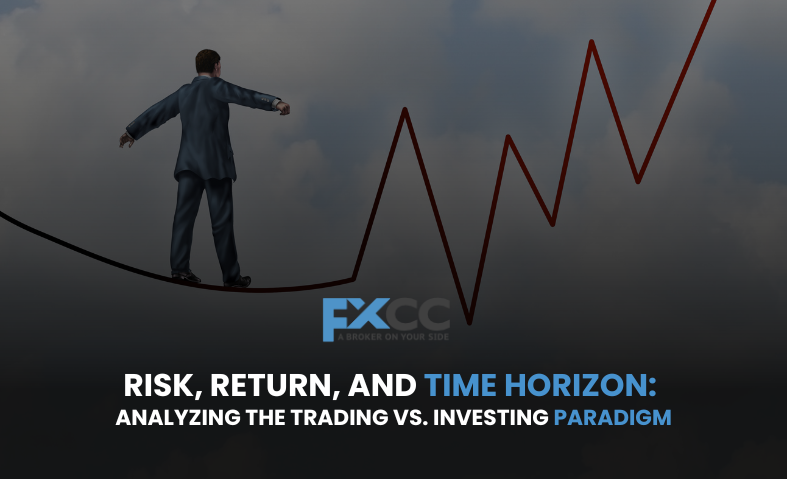People in the business world often use the words “trading” and “investing” to refer to the same thing, but they mean very different things. Both try to make money, but their tactics, psychological needs, and the guiding principles that guide them are very different. This piece will talk about the differences between trading and buying and how they relate to risk, return, and time span. This will help you figure out which way fits your personality and financial goals the best.

What Makes Them Different: Time
The fundamental distinction between trading and investing boils down to one crucial element: time horizon. A long-term view, usually measured in years or even decades, is what a trader has. The main goal is to slowly get rich by buying and keeping things that will go up in value over time. Take the famous businessman Warren Buffett as an example. He believes that you should buy good companies and hold on to them “forever.” The long-term basics of a business are looked at, like its revenue, management, and ability to stay ahead of the competition. The trader doesn’t care as much about daily price changes because they see them as temporary noise and not a sign to act.
Traders, on the other hand, work with much shorter time frames, from seconds (scalping) to weeks or months (swing trading). Traders want to make money by taking advantage of short-term price changes. They don’t care about how much a company is worth in the long run. Instead, they are interested in how supply and demand affect a stock or currency right now. Technical analysis is where traders play. They use charts, symbols, and trends to guess how prices will move in the future. The number of successful deals they make is what determines their success, not the steady growth of a single product.
Risk and Return: A Well-Thought-Out Trade-Off
The difference in time span has a direct effect on how risk and gain are handled.
As a trader, you can lower your risk by spreading your money around and fully knowing the value of each product. A diverse portfolio with investments in a number of different types of assets lowers the chance that one investment will not do well. The investor knows that there will be losses and market corrections in the short term, but they are sure that the assets will return and grow in the long term. For investors, the return is usually slower but more stable. It comes in the form of capital growth and, in some cases, income or interest payments. A significant market downturn could take years, or even decades, to recover from.
Risk is a bigger and more direct worry for traders. Stop-loss orders and other tools help traders set and limit the amount of money they can lose on a single trade. They often borrow money to increase their returns, which means that they have a much higher chance of both making money and losing money. A trader’s return is made up of many small earnings added together. If they are not careful, one lost trade can wipe out days or even weeks of gains. Traders’ lives are full of measured risks, and they have to make decisions quickly and correctly.The potential for high returns is always accompanied by an equally high potential for significant loss.
How Psychological Ideas Work
Trading and buying are very different from each other in terms of how they make you feel. The owner needs to be patient and follow rules. They have to be strong-willed enough to hold on to their assets when the market goes down and fight the urge to sell quickly. Fear and the fear of missing out (FOMO) are the main emotions that an investor has to deal with. They think in terms of delayed satisfaction.
It takes a different kind of mental toughness to be a trader. They need to be able to quickly and objectively decide what to do based on facts, not hope or fear. Traders have to accept that losses are a normal part of the business and not let them affect their confidence or the choices they make in the future. Revenge trading, or making bigger, risky moves to try to get back losses, is the trader’s worst enemy in the mind. It’s important for traders to be in the present and respond to what the market is doing at the moment.
Which Way Should You Go?
It’s not about which is “better” that matters; what matters is which is better for you.
If you want to keep your hands off your money, have a steady income, and have a long-term financial goal (like retirement), saving is probably the best way to go. It lets you use the power of compounding to slowly build wealth over time without having to worry about keeping an eye on the markets every day.

Trading could be a good choice if you have the time, desire, and mental control to study how markets work, act quickly, and can handle the stress of making and losing money all the time. It can give you the chance to make a lot of money quickly, but you need to be very skilled, dedicated, and have a strong plan for managing your risks.
In the end, both trade and investment are important parts of the financial world. For different people, they do different things. The first and most important step in choosing a model is to understand the basic link between risk, return, and time span. The key to success is building a financial plan that matches your personal risk tolerance, goals, and resources.


